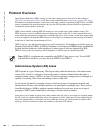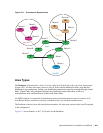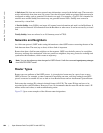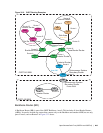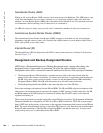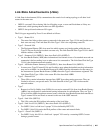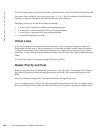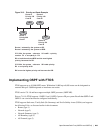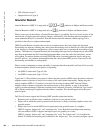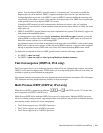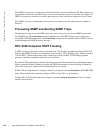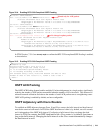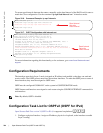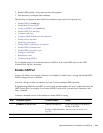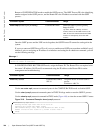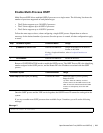700 | Open Shortest Path First (OSPFv2 and OSPFv3)
www.dell.com | support.dell.com
• NSSA External (type 7)
• Opaque Link-local (type 9)
Graceful Restart
Graceful Restart for OSPFv2 is supported on c e and s platforms in Helper and Restart modes.
Graceful Restart for OSPFv3 is supported only on
e
t
platforms in Helper and Restart modes.
When a router goes down without a Graceful Restart, there is a possibility for loss of access to parts of the
network due to ongoing network topology changes. Additionally, LSA flooding and reconvergence can
cause substantial delays. It is, therefore, desirable that the network maintain a stable topology if it is
possible for data flow to continue uninterrupted.
OSPF Graceful Restart recognizes the fact that in a modern router, the control plane and data plane
functionality are separate, restarting the control plane functionality (such as the failover of the active RPM
to the backup in a redundant configuration), does not necessarily have to interrupt the forwarding of data
packets. This behavior is supported because the forwarding tables previously computed by an active RPM
have been downloaded into the Forwarding Information Base on the line cards (the data plane), and are
still resident. For packets that have existing FIB/CAM entries, forwarding between ingress and egress
ports/VLANs etc., can continue uninterrupted while the control plane OSPF process comes back to full
functionality and rebuilds its routing tables.
When a router is attempting to restart gracefully, it originates the following link-local Grace LSAs to notify
its helper neighbors that the restart process is beginning:
• An OSPFv2 router sends Type 9 LSAs.
• An OSPFv3 router sends Type 11 LSAs.
Type 9 and 11 LSAs include a grace period, which is the time period an OSPF router advertises to adjacent
neighbor routers as the time to wait for it to return to full control plane functionality. During the grace
period, neighbor OSPFv2 /v3 interfaces save the LSAs from the restarting OSPF interface. Helper
neighbor routers continue to announce the restarting router as fully adjacent, as long as the network
topology remains unchanged. When the restarting router completes its restart, it flushes the Type 9 and 11
LSAs, thereby notifying its neighbors that the restart is complete. This should happen before the grace
period expires.
Dell Force10 routers support the following OSPF graceful restart functionality:
• Restarting role in which a router is enabled to perform its own graceful restart.
• Helper role in which the router's graceful restart function is to help a restarting neighbor router in its
graceful restarts.
• Helper-reject role in which OSPF does not participate in the graceful restart of a neighbor.
OSPFv2 supports “helper-only” and “restarting-only” roles. By default, both helper and restarting
roles are enabled. OSPFv2 supports the helper-reject role globally on a router.
OSPFv3 supports “helper-only” and “restarting-only” roles. The “helper-only” role is enabled by
default. To enable the restarting role in addition to the “helper-only” role, you must configure a grace



